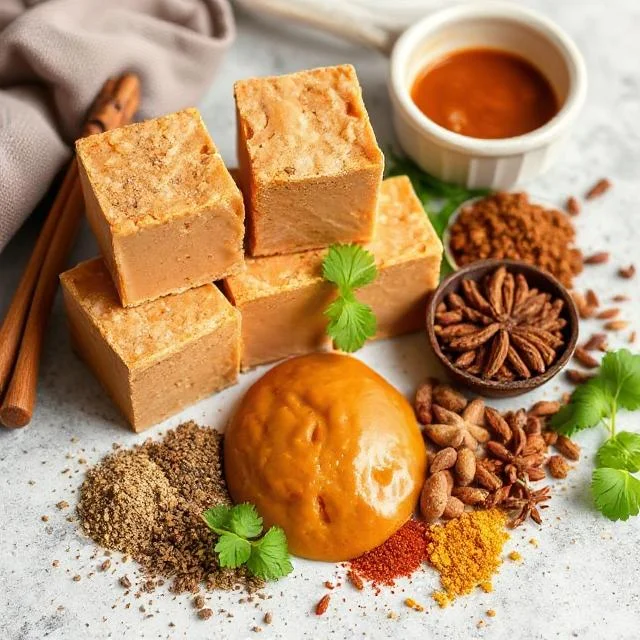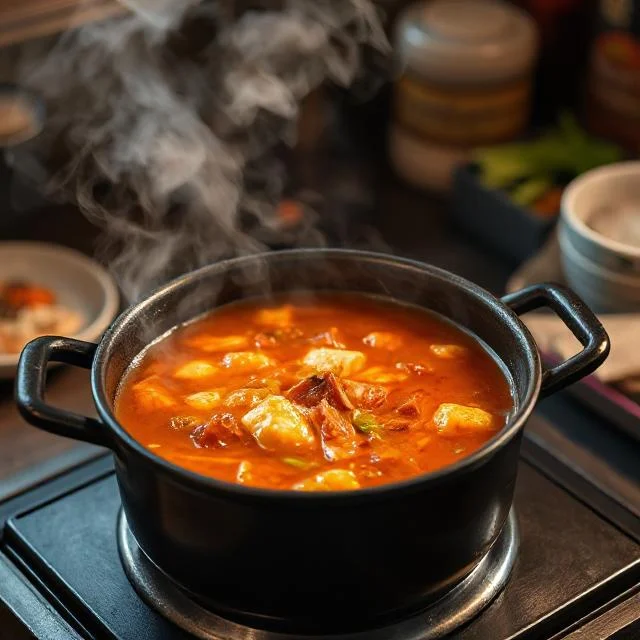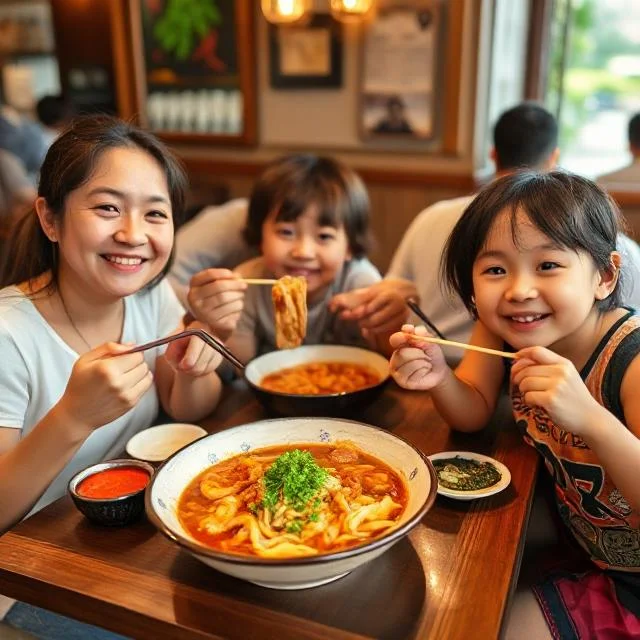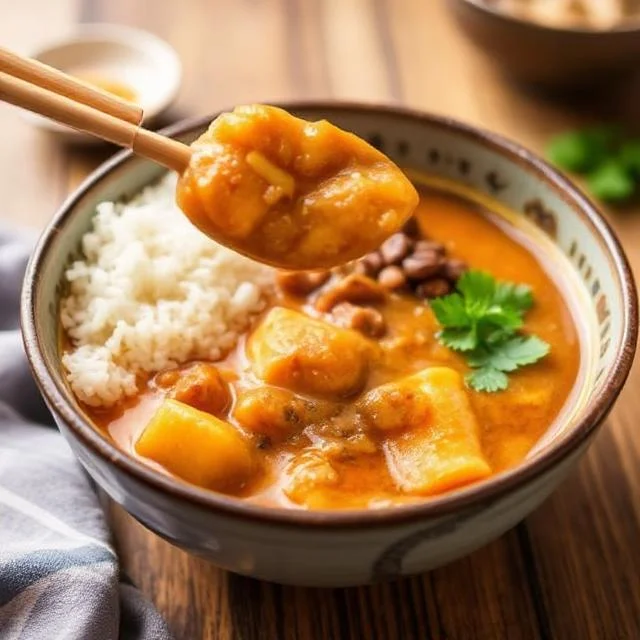Introduction
Japanese curry is more than just a dish—it’s a cultural phenomenon that has captured the hearts and taste buds of people worldwide. Unlike its Indian or Thai counterparts, JCurry rice is uniquely mild, rich, and deeply comforting. Its thick, velvety sauce, tender chunks of meat, and hearty vegetables make it the ultimate comfort food. Whether you’re a seasoned foodie or a curious beginner, this article will explore why curry deserves a spot in your culinary repertoire. From its fascinating history to its modern-day variations, we’ll dive into everything that makes this dish so special.
The History and Evolution of Japanese Curry
Japanese curried rice has a rich history that reflects the country’s ability to adapt and innovate. Let’s explore its origins and how it became a staple in Japanese cuisine.
The Introduction of Curry to Japan
Curry was introduced to Japan during the Meiji era (1868–1912) by the British, who had adopted it from India. Initially, it was a luxury dish served in upscale restaurants, but it quickly gained popularity among the masses.
The Birth of Japanese Curry Roux
In the early 20th century, Japanese spiced curry underwent a transformation with the invention of curry roux blocks. These pre-packaged blocks made it easy for home cooks to prepare curry, cementing its place in Japanese households.
How Kare Raisu dish Differs from Other Curries
Unlike Indian or Thai curries, Japanese spiced curry is milder, sweeter, and thicker. It often includes ingredients like apples, honey, or soy sauce, giving it a unique flavor profile that appeals to a wide audience.
The Role of Curry in Japanese Culture
Curry is more than just a meal in Japan—it’s a cultural icon. From school lunches to convenience store offerings, curry is deeply embedded in everyday life.

A vintage Japanese kitchen with curry roux blocks and traditional utensils
The Key Ingredients That Make Japanese Curry Unique
Japanese curried rice’s distinct flavor comes from its carefully selected ingredients. Let’s break down the essential components.
The Curry Roux: The Heart of the Dish
The roux is the foundation of Japanese spiced curry, providing its thick texture and rich flavor. It’s typically made from flour, fat, and a blend of spices.
The Protein: Meat or Seafood Options
Japanese curried rice often features proteins like beef, pork, chicken, or seafood. Each protein adds its own depth of flavor to the dish.
The Vegetables: A Balanced Medley
Common vegetables include potatoes, carrots, and onions, which add sweetness and texture. Some variations also include bell peppers or mushrooms.
The Secret Ingredients: Apples, Honey, and More
Unique additions like grated apples, honey, or soy sauce give Japanese spiced curry its signature sweetness and umami.

A close-up of Japanese curried rice roux blocks and spices
How to Make Japanese Curry at Home
Making Japanese curried rice at home is easier than you might think. Follow these steps to create a delicious meal.
japanese curry : Choosing the Right Curry Roux
There are many brands of curry roux available, each with its own flavor profile. Popular options include S&B Golden Curry and House Foods Vermont Curry.
Preparing the Ingredients
Chop your vegetables and protein into bite-sized pieces for even cooking. Sauté the onions until caramelized to enhance the flavor.
Cooking the Curry: Step-by-Step Instructions for japanese curry
Combine the ingredients in a pot, add water, and simmer until the vegetables are tender. Stir in the curry roux and cook until the sauce thickens.
Serving Suggestions: Rice, Bread, and More
Japanese curried rice is traditionally served with steamed rice, but it can also be enjoyed with bread or udon noodles.

A pot of simmering Japanese spiced curry with steam rising
Regional Variations of Japanese Curry
Japanese curried rice varies by region, each offering its own unique twist.
Hokkaido: Rich and Creamy Curry
Hokkaido’s cold climate inspires rich, creamy curries often made with dairy products like butter and milk.
Okinawa: A Tropical Twist
Okinawan curry incorporates local ingredients like bitter melon and pork, reflecting the island’s tropical flavors.
Katsu Curry: A Tokyo Favorite
Katsu curry, featuring a crispy breaded cutlet, is a beloved dish in Tokyo and beyond.
Seafood Curry: A Coastal Delight
Coastal regions like Hiroshima and Nagasaki are known for their seafood curries, made with fresh fish and shellfish.

A plate of katsu curry with a crispy cutlet and rice
Why Japanese Curry Is the Ultimate Comfort Food
Curry’s comforting qualities make it a favorite for many.
The Perfect Balance of Flavors
The combination of sweet, savory, and spicy flavors creates a harmonious dish that satisfies all taste buds.
Its Versatility and Adaptability
Japanese curried rice can be customized to suit different preferences, making it a versatile meal option.
The Nostalgia Factor
For many, Japanese spiced curry evokes fond memories of family meals and school lunches.
Health Benefits of Japanese Curry
Packed with vegetables and protein, Japanese curried rice is a nutritious and filling meal.

A cozy family enjoying Japanese curried rice at home
Conclusion
Japanese curry is more than just a dish—it’s a comforting embrace in a bowl. Its rich history, unique ingredients, and versatility make it a beloved meal for people of all ages. Whether you’re enjoying a classic beef curry or experimenting with regional variations, Japanese spiced curry is sure to warm your heart and satisfy your cravings. So why not try making it at home or exploring a local Japanese restaurant? Your taste buds will thank you.
Advice
Japanese curried rice is the ultimate comfort food that combines rich, savory flavors with a satisfying depth. Unlike other curries, curry is typically thicker and sweeter, thanks to ingredients like apples, honey, and a variety of spices. To make the perfect curry, start by sautéing onions, carrots, and potatoes in butter until softened, then add your choice of meat—usually chicken, pork, or beef. Use a store-bought curry roux or make your own blend of curry powder, flour, and stock for the base. Simmer the mixture until the vegetables are tender and the sauce has thickened. Serve the curry over a bed of fluffy white rice for a truly comforting meal that will warm you up from the inside out. Its combination of mild spice and sweetness makes Japanese curry a dish everyone can enjoy!

